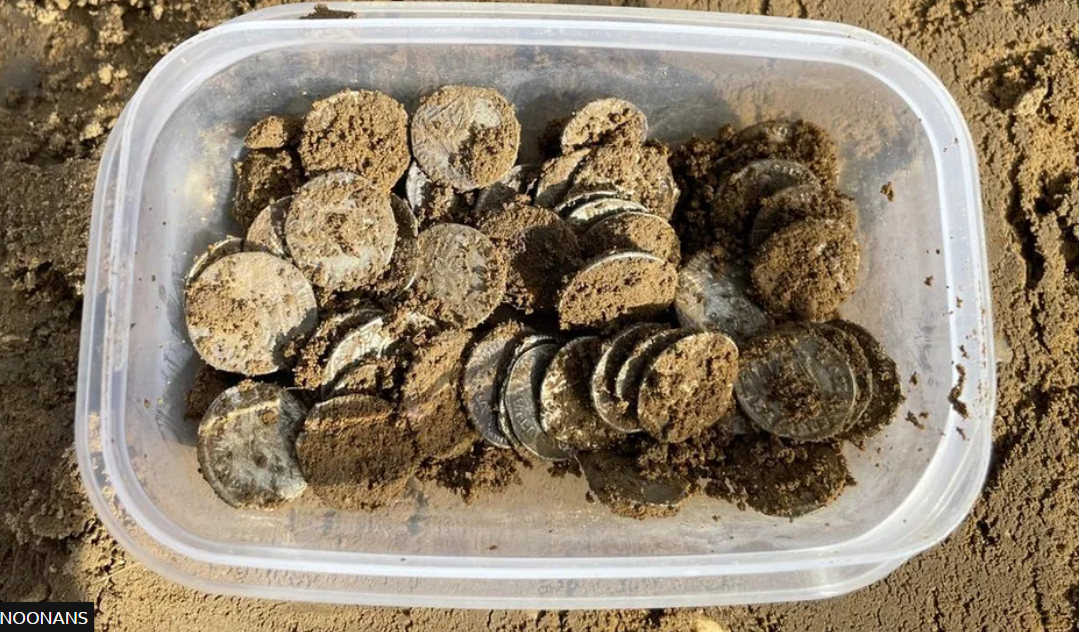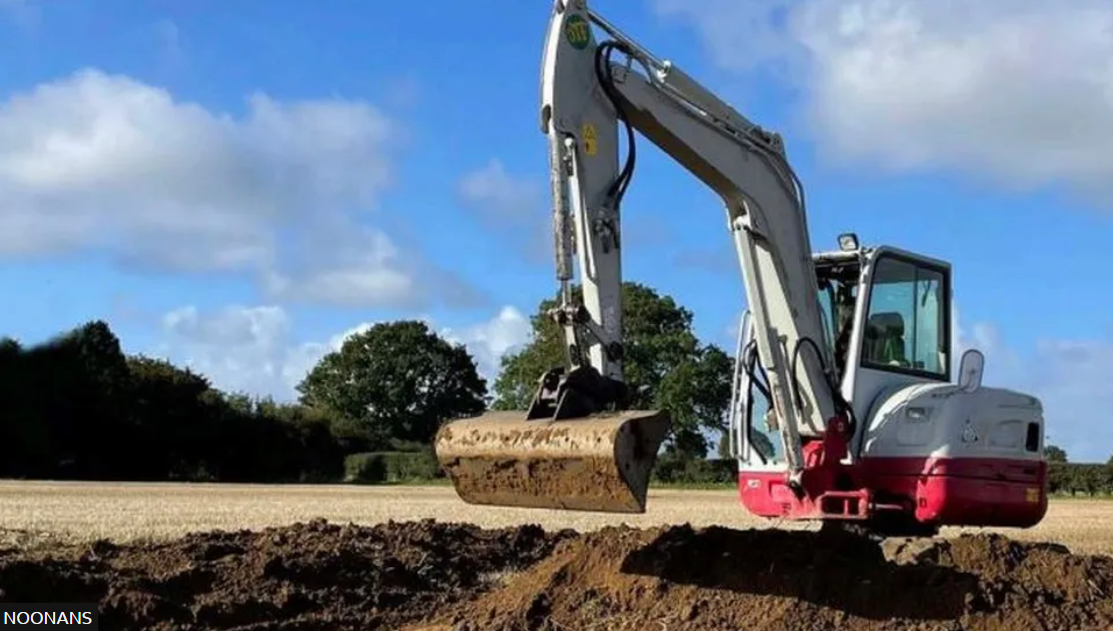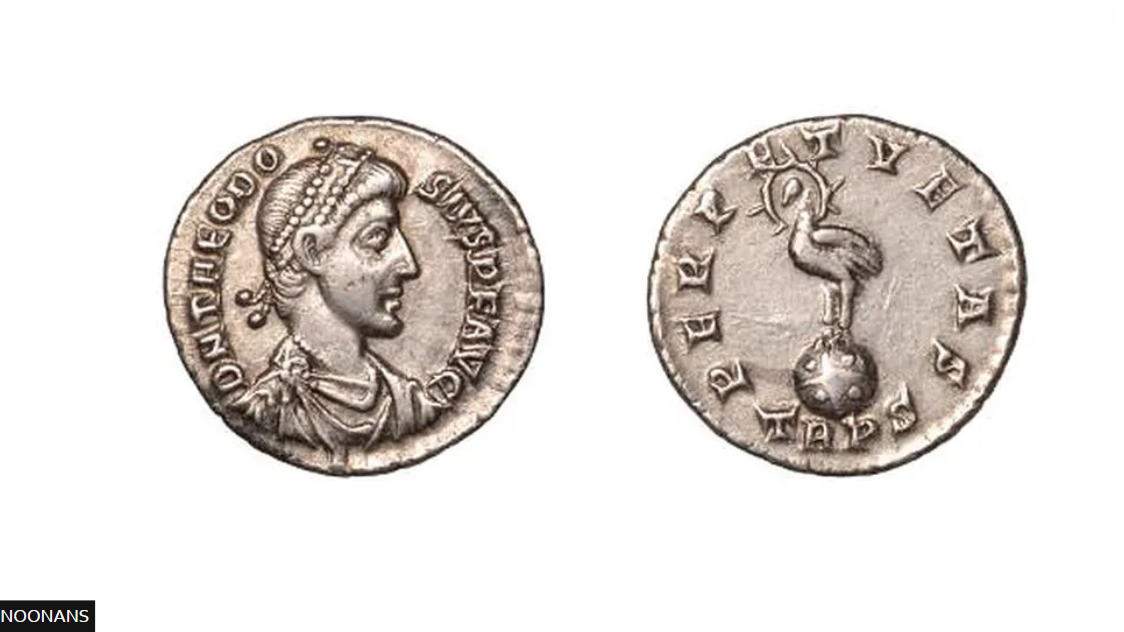"onanymní detektorista" 
Half a millionth find of 5th century Roman coins did not end up in a museum
Categories: Nálezy nejenom s detektorem ve Velké Británii a Irsku
In December, a collection of 73 Roman coins was auctioned, including an extremely rare coin with a phoenix on a globe. The entire set was discovered by an anonymous detectorist while legally searching farmland in Norfolk. The auction fetched over £15,000, or about 427,000 crowns.
The coins were discovered near the village of Colkirk, near Fakenham in Norfolk, by a man who did not want to be identified by the media. "The anonymous finder proved his persistence," said numismatic specialist Nigel Mills of Noonans Auctioneers. "Some of the people I have spoken to in the past who have made amazing finds spend a lot of time detecting - hours and hours. They don't give up. They keep going and that's the secret to so many finds - don't give up, keep looking," he added.
The first coin was found by a detectorist in January 2020 - it was a small silver coin of the siliqua type. He discovered 40 more coins that day. He reported the coins and continued to search for more in cooperation with archaeologists. In 2020, 315 coins were discovered, 114 a year later and the last three in 2022. The hoard was kept secret and traced for more than two years, due to restrictions associated with covid measures. Each individual coin was carefully photographed and its location recorded using professional GPS technology.
Most of the coins lay within a small radius of 1.5 m, but others were scattered over a wide area by agricultural equipment. The individual coins were spread over an area of about 13 acres. Some had been damaged by agricultural processes. However, many of the pieces were in relatively good condition, including an extremely rare commemorative coin which was intended for Roman warriors. This coin alone sold for £3,400, which at today's exchange rate is about 97,000 crowns.
"The hoard was probably deposited in the early 5th century AD, with the latest Honorius coin dating back to no later than 402 AD," Mr Milleas said. Other Roman gold and silver finds from East Anglia, such as the Hoxne and Thetford hoards, reflect the wealth and importance of the area, the numismatist concluded.
The collection went through the approval process under the Treasure Act 1996 but was eventually released for private auction as it was not purchased by any museum.
Roman Nemec
Sources: bbc.com, thesun.co.uk



The article is included in categories:
- Archive of articles > Archaeology > Finds and rescue research abroad > Nálezy nejenom s detektorem ve Velké Británii a Irsku
Post
nad tím by onanymoval snad každý 
Taky jsem se zarazil, cože to na tom poli vlastně dělal 🤪😂😂😂
Jen se občas pozastavím nad podobným tvrzením-cituji-“fénix nad zeměkoulí…”
Copak ti kacíři z Říma věděli, že Země je kulatá? Tady se za to snad ještě v 17.stol upalovalo 🤪😇 a v US je dodnes spousta lidí, co věří, že to je placka 😂
Ta koule prostě v symbolice znamenala něco jiného, jen se už možná ani neví co.
Idler - dobře ty 👍
Fajný překlep  Myslím si, že tohle slovo se uchytí
Myslím si, že tohle slovo se uchytí 
idlere - 👍👍👍
Prdón, občas se mi to srane 
Pokud jde o zemegulu, vědělo se o ní už hezkých pár století před Římany. V placatici dneska věří kde kdo (a v ČR taky nemálo blouznivců). Je zjevné, že antický svět byl ve vědění mnohem dál, než mohou někteří dnešní současníci pochopit.
Toš to bys nás mohl poučit a přidat nějaké dobové prameny 😉 Ale opravdu dobové, nemyslím dohady současných někdy i pavědců. Jistě něco takového v rukávu máš.
Jako spousta jazyků vychází z latiny a tam je v překladu GLOBUS pouhou KOULÍ, ne Zeměkoulí.
Jinak samosebou antika byla hodně daleko. Kupodivu a obdivuhodně. Je až zarážející, jak se starého poznání s lehkostí ti následující vzdali. Že by za to mohlo “stěhování národů”?
Děkujeme 👍
Když já právě nerad někoho poučuju. Ale Google určitě poradí, je tam toho dost.
https://www.akropolis.cz/content/odkdy-vime-ze-je-zeme-kulata
Už Phytagoras popisuje sférický tvar země, Eratosthéné počítal poloměr země a napsal (přesně si to už nepamatuji) něco jako ,,Záznamy o zeměpisu‘‘, krom matematiky to byl velký geolog a geograf a nejvíc obdivoval Hekataiose, kterého považoval za otce geografie. A to jsme někde v šestém až třetím století B.C.
úmyslně, nebo naschvál? – Pythagoras 




https://youtu.be/-TUEkVVzY7I?si=ZhNq7GEKKZw4ezpQ
Pepa Nos je klasik 















